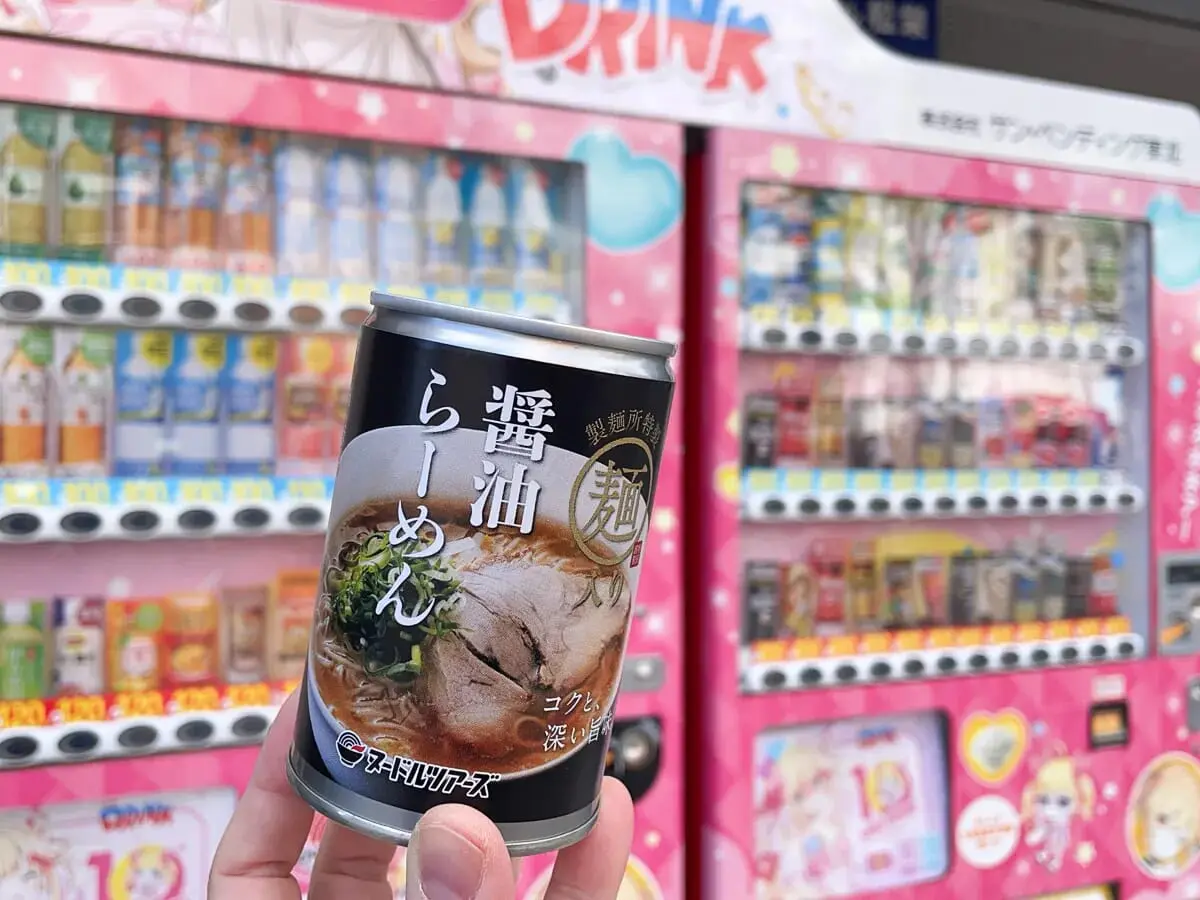Everyone can agree that Japan’s vending machines offer some of the most delicious and creative snacks and beverages in the world. Now, these innovative machines are reaching new heights of ingenuity with authentic canned ramen. Available at 150 locations in Miyagi Prefecture and 100 locations in Mito city, Ibaraki Prefecture, the ¥500 canned ramen is best enjoyed hot immediately after purchase.
As of now, the product comes in one flavor: soy sauce. It contains wheat noodles made at a noodle factory, soy sauce soup and classic ramen toppings, namely green onions, bamboo shoots and roasted pork. A collaborative endeavor between commercial noodle manufacturer Maruyama Seimen and Sun Vending Tohoku, this canned ramen is the first of its kind to use genuine wheat noodles instead of konjac. Although it is not available in Tokyo yet, Maruyama Seimen hopes to sell the canned ramen across the country soon.

Noodle Tours Shoyu Ramen by Maruyama Seimen Co., Ltd., Courtesy of PR Times
The Evolution of Canned Ramen
Maruyama Seimen’s invention is not the first canned ramen to emerge from Japan. In the early 2000s, the owner of a famous Tokyo ramen shop called Menya Musashi created the first ramen can. The item came in three variations: miso, soy sauce and chilled. Inventor Takeshi Yamada told Ascii that he was inspired by his time volunteering after the 2004 Chuetsu earthquake in Niigata Prefecture. While serving ramen to those in need, Yamada was struck by the immense gratitude people showed when they received the simple dish.
Following this touching experience, Yamada decided to redefine the national dish in the hope of aiding future disaster relief efforts. The greatest challenge was trying to keep the ramen noodles, traditionally made of wheat, firm. Every prototype saw the noodles turning soggy, unable to retain their texture for an extended period. Yamada then resorted to using konjac noodles, which influenced future iterations of canned ramen until now.
Other companies, such as Tengu Canned Foods, Fujimi Foods and Umai released variations of Yamada’s formula, featuring konjac noodles and a folded fork on top of the can. Some experimented with other kinds of Japanese noodles such as udon and soba. Like its predecessor “Oden Can,” canned ramen came to be associated with the electric lights of Akihabara as a popular souvenir.

available in Miyagi and Ibaraki Prefectures at select vending machines by Sun Vending Tohoku Co., Ltd., courtesy of Minkei Local News Network
Potential For Disaster Relief
Staying true to Yamada’s original mission to promote canned ramen as an emergency food item, Maruyama Seimen’s new canned soy sauce ramen can be stored at room temperature for up to three years. Obviously, the ramen tastes better warm, but its longevity points to its potential for disaster relief efforts.
The people of Japan have always been vigilant and proactive about preparing for natural disasters, because of the country’s geographical vulnerability to earthquakes, tsunamis and typhoons. So, while non-perishable inventions like canned ramen might seem like an unnecessary gimmick or passing fad to some, they may possess a lasting capacity to aid people during periods of adversity.









